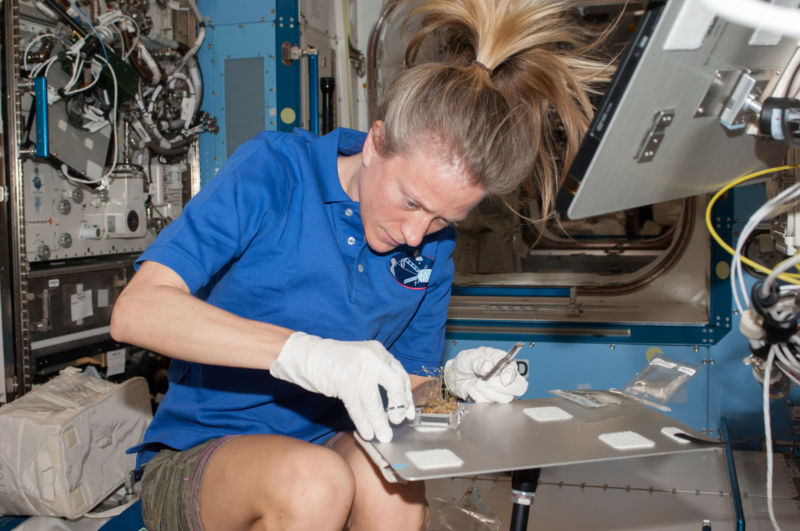
As it nears the end of its second decade, the International Space Station is starting to hit its stride. The large orbital laboratory offers private companies a chance to test business ideas in microgravity, serves as a testbed for astronaut health, and allows NASA to prove technologies for future missions into deep space.
One of the critical technologies NASA will need if it really does send humans beyond the Earth-Moon system within the next few decades is more powerful computers capable of operating in the deep space environment. Presently, the main command computers that operate the space station use Intel i386 processors. However, that is fine for the station because all of its critical systems are monitored around the clock by ground-based flight controllers who can work in real time with the crew to fix any problems that arise.
If humans do travel to Mars, they will face increasingly long communications delays—stretching out to more than half an hour—between Earth and their spacecraft. In that situation, the astronauts are likely to become more reliant on more powerful computers and artificial intelligence to make critical course corrections or decisions within seconds or minutes.
A "smart" spacecraft, however, will require a considerably more powerful and robust computer. So NASA and Hewlett-Packard Enterprise (HPE) are taking the first step toward that by launching a "supercomputer" to the International Space Station. It will ride into space as early as Monday aboard SpaceX's next supply mission to the station.
A 1-teraflop experiment
"This goes along with the space station's mission to facilitate exploration beyond low Earth orbit," Mark Fernandez, HPE's leading payload engineer for the project, told Ars. "If this experiment works, it opens up a universe of possibility for high performance computing in space."
For the year-long experiment, astronauts will install the computer inside a rack in the Destiny module of the space station. It is about the size of two pizza boxes stuck together. And while the device is not exactly a state-of-the-art supercomputer—it has a computing speed of about 1 teraflop—it is the most powerful computer sent into space. Unlike most computers, it has not been hardened for the radiation environment aboard the space station. The goal is to better understand how the space environment will degrade the performance of an off-the-shelf computer.
During the next year, the spaceborne computer will continuously run through a set of computing benchmarks to determine its performance over time. Meanwhile, on the ground, an identical copy of the computer will run in a lab as a control.
If the test is successful, it will open the door to the use of even more powerful computers aboard the space station and other spacecraft NASA is developing to send humans farther into space. Fernandez said HPE also envisions that scientists could eventually use an on-board supercomputer for data processing of their experiments on the station, rather than clogging the limited bandwidth between space and ground with raw data.
reader comments
143